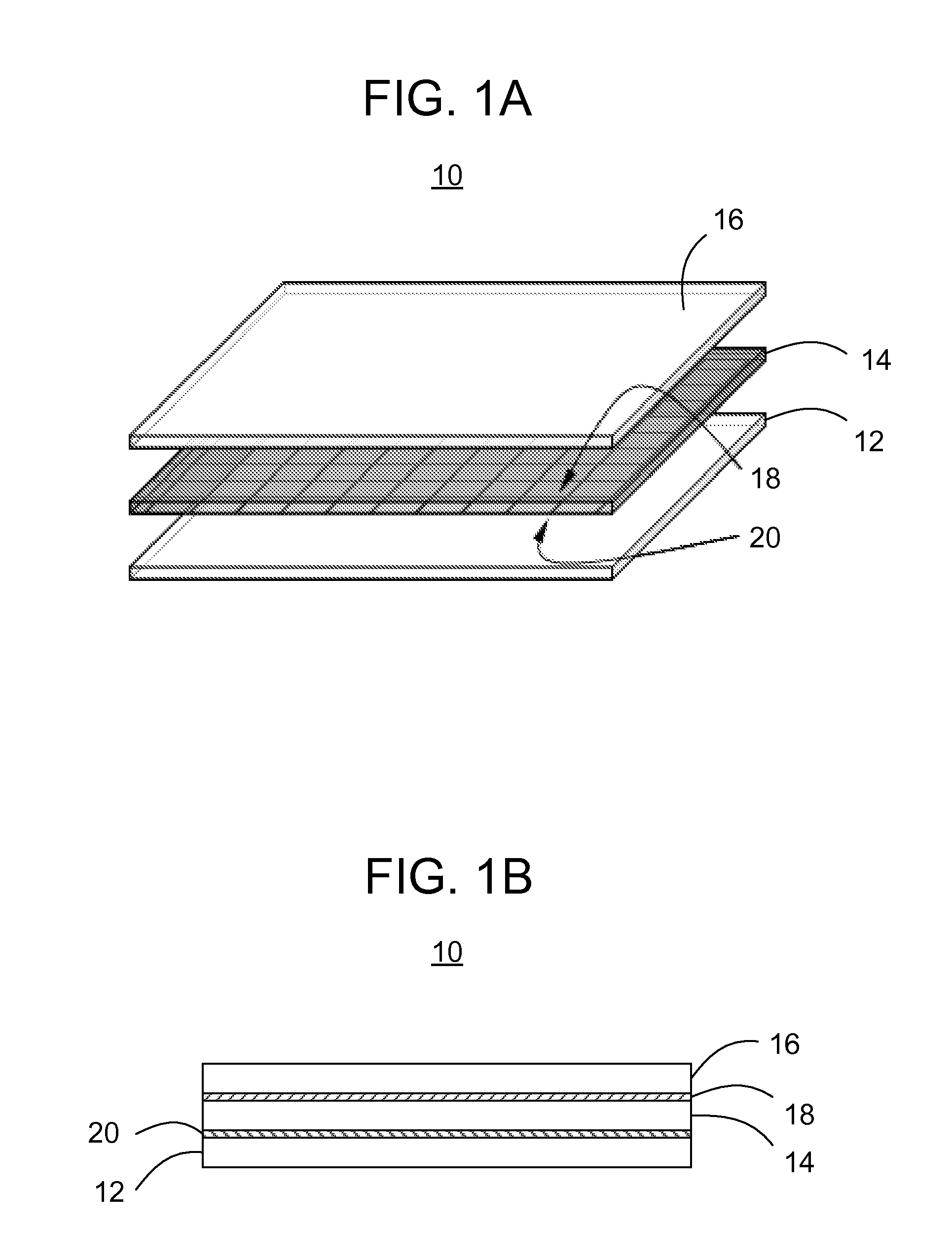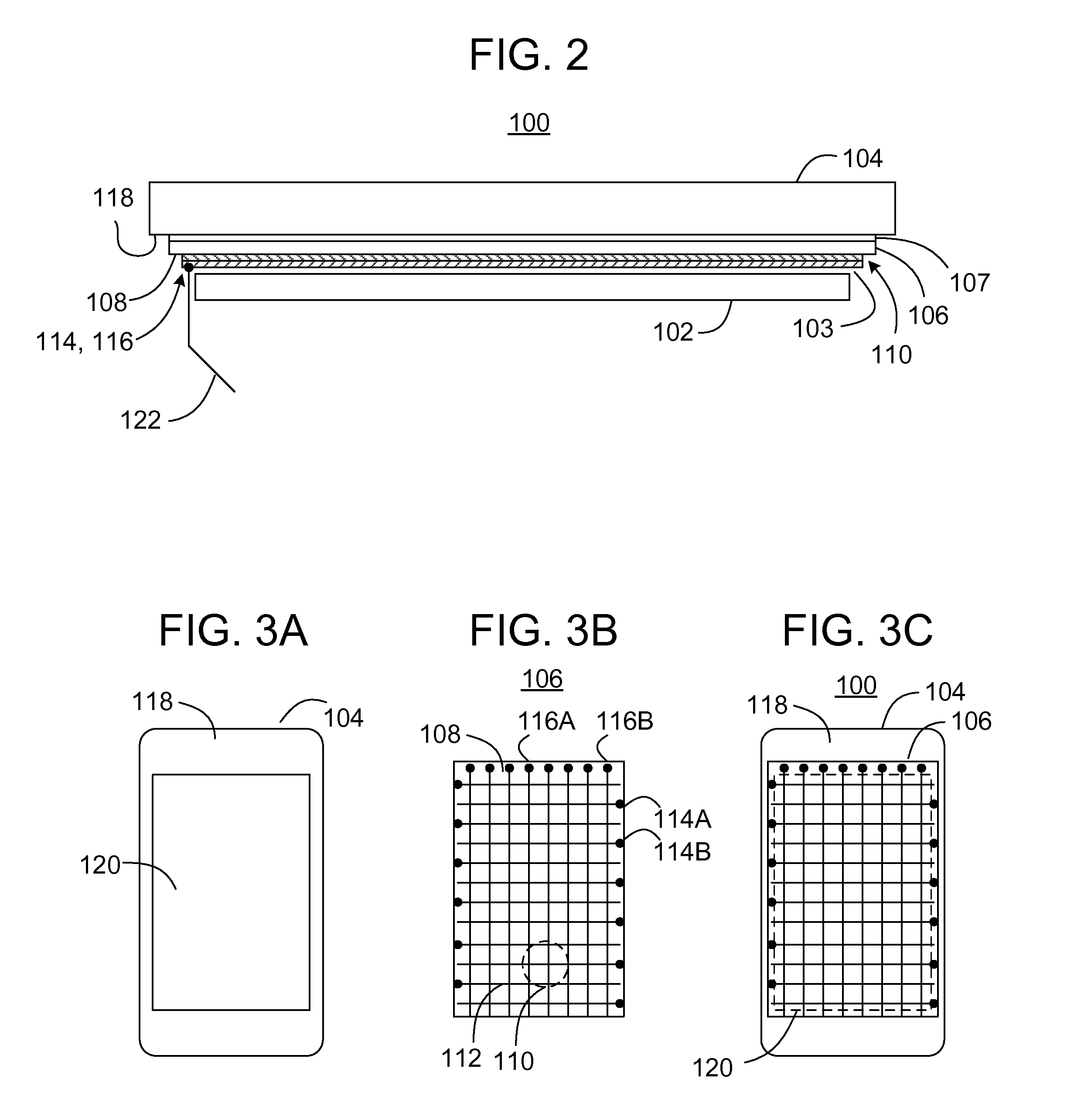Methods and apparatus for providing touch sensitive displays
a touch-sensitive display and touch-sensitive technology, applied in the direction of static indicating devices, instruments, paper/cardboard containers, etc., can solve the problems of reducing the transparency of glass, few practical manufacturing processes available for cutting such glass, and affecting the cost of the approach
- Summary
- Abstract
- Description
- Claims
- Application Information
AI Technical Summary
Benefits of technology
Problems solved by technology
Method used
Image
Examples
Embodiment Construction
With reference to the drawings wherein like numerals indicate like elements there is shown in FIG. 2 a touch sensitive display 100 in accordance with one or more embodiments and aspects described herein. The touch sensitive display 100 may be used in a variety of consumer electronic articles, for example, cell-phones and other electronic devices capable of wireless communication, music players, notebook computers, mobile devices, game controllers, computer “mice”, electronic book readers and other devices.
The touch sensitive display 100 includes a display layer 102, a cover glass layer 104, and a touch glass layer 106 positioned between the display layer 102 and the cover glass layer 104. The touch sensitive display 100 may include an air gap 103 between the display layer 102 and the touch glass 106 and grid 110 combination. The touch glass 106 and grid 110 combination may be laminated to the cover glass layer 104 via an adhesive layer 107.
The touch glass layer 106 includes a first ...
PUM
| Property | Measurement | Unit |
|---|---|---|
| width | aaaaa | aaaaa |
| thick | aaaaa | aaaaa |
| thickness | aaaaa | aaaaa |
Abstract
Description
Claims
Application Information
 Login to View More
Login to View More - R&D
- Intellectual Property
- Life Sciences
- Materials
- Tech Scout
- Unparalleled Data Quality
- Higher Quality Content
- 60% Fewer Hallucinations
Browse by: Latest US Patents, China's latest patents, Technical Efficacy Thesaurus, Application Domain, Technology Topic, Popular Technical Reports.
© 2025 PatSnap. All rights reserved.Legal|Privacy policy|Modern Slavery Act Transparency Statement|Sitemap|About US| Contact US: help@patsnap.com



